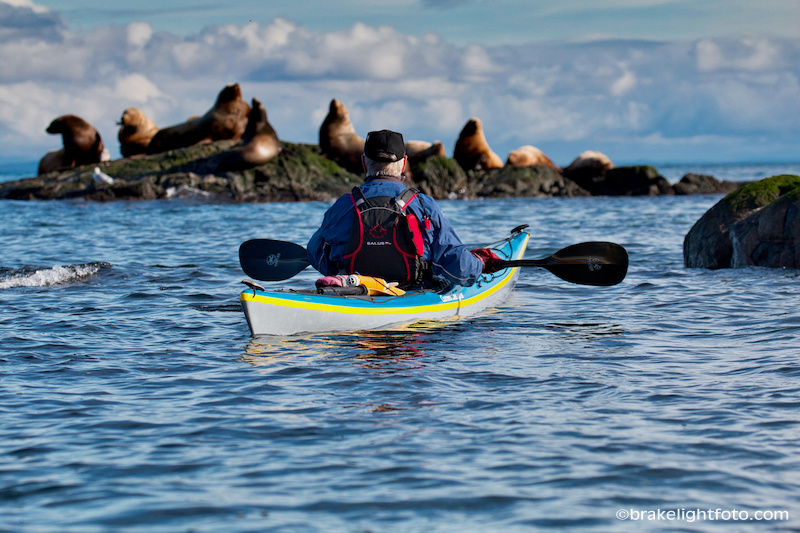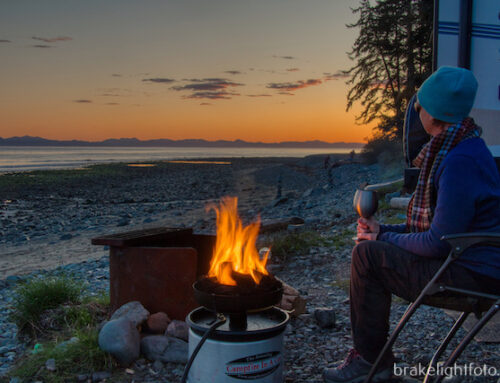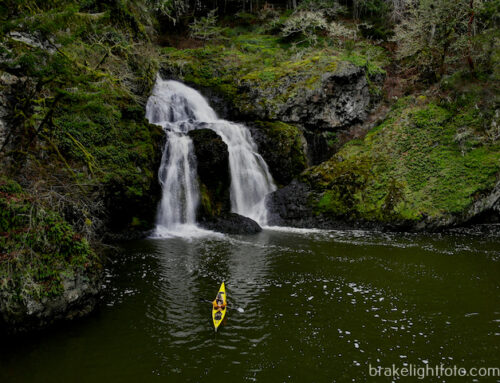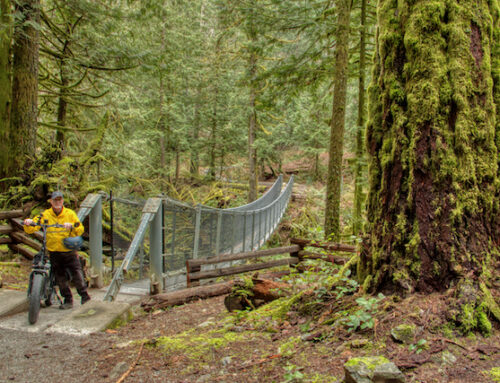Victoria’s Beautiful Mild Winter Days Provide Great Sea Kayaking Opportunities
One thing we truly love about Victoria are the mild winters. In late February, while the rest of Canada is in a deep freeze, in Victoria the leaves in the undergrowth are beginning to bud, blossoms and flowers are blooming, and the scent of the Indian Plum blossoms can be intoxicating.
Don’t get me wrong, we get our fair share of foul weather and this year we have had more than our fair share of rain and wind. However, if you pick the right winter day conditions can be truly amazing! This is exactly what my good friend Brian Henry of Ocean River Adventures and I did one late February day when we decided grab our kayaks and head off for a winter’s paddle to Discovery Island.
With temperatures around 9-10° C or 48-50° F and winds predicted to be light we decided to set off on a circumnavigation of the Island, which lies a short distance off the southeast coast of Victoria on Vancouver Island, BC. Discovery Island is half Provincial Marine Park and half Songhees First Nations Reserve land.
Right beside Discovery Island are the Chatham Islands, also part of the Songhees reserve lands. While you can’t land on the reserve lands, (you can be fined if you do), there is some fantastic paddling around and through this beautiful archipelago.
A Brief History of Discovery Island
Discovery Island was named after Captain George Vancouver’s ship, the HMS Discovery, which he used to navigate the coastline of British Columbia between 1792 and 1794. The lighthouse found at the eastern end of Discovery Island, marks the junction of Haro Strait and the Juan De Fuca Strait. It was built in 1886 and manned for 110 years before being fully automated in 1996.
Unfortunately, it is now showing the signs of neglect that comes from not having a full time keeper. The lighthouse is located on Sea Bird Point, which wasn’t named for all the sea birds that can collect here but after an American paddle steamer that caught fire and was run aground here in 1858.
Discovery Island Provincial Marine Park
This beautiful provincial marine park located here offers campsites in an open field facing south toward the Juan De Fuca Straits and the Olympic Peninsula. While only a short distance from Victoria (roughly 5 kms or 3 miles), it feels like a true west coast wilderness experience. Basic park facilities include a pit toilet, information shelter and picnic tables. The island has no potable water. Open fires on the upland and foreshore are not permitted, and a self-registered camping fee (May 1 – September 30) is payable on an honour system into a self-registration vault at the information shelter. Discovery Island Marine Provincial Park is open year round. During the off-season there are no fees or services.
Wildlife
There is an incredible amount of wildlife to be seen around Discovery Island. The intertidal zone is filled with kelp beds, crabs, sea urchins, sea stars and more. There is a great variety of birds including eagles, peregrine falcons, glaucous-winged gulls, pelagic cormorants, harlequin ducks, pigeon guillemots and black oyster catchers and many more. There are lots and lots of harbour seals, either swimming around or sunning themselves on the many exposed rocks.
In the winter, there is small colony of sea lions just off Sea Bird Point and if you’re very lucky you will sometimes get treated to the sight of dolphins, porpoises or whales! Up until recently there was even a wolf living on Discovery Island.
Getting There
A paddling trip to Discovery and Chatham Islands is not recommended for beginners as the waters around these islands can be treacherous. There is a lot of tidal action moving water around the southern tip of Vancouver Island. The waters are being pushed and accelerated around headlands and squeezed between islands. This means a trip here requires a good understanding of currents, wind conditions and how the two interact.
Currents of 3-6 knots (5 1/2-11 kmph) can be found in Plumper Passage and Baynes Channel. Currents of this strength are considered very strong, especially from the point of view of a paddler. Make sure to check the weather and currents before you go and have the paddling skills to deal with strong currents and potentially rough water to be found here. If in doubt, go with some more experience friends or check out tours available from tour operators like Ocean River Sports.
There are a few places you can launch from including; Ten Mile Point, Cadboro Bay, Cattle Point, and Willows Beach. One of the more popular departures is from the Oak Bay Marina, which is my favourite. This route takes you through the Great Chain Islets which is an ecological reserve – no landing is permitted. This is not only a very interesting route because of the myriad islets and wildlife you will see, but you are always crossing currents on the way to Discovery Island. This is generally preferable when paddling. For more detailed instructions on paddling to Discovery Island, click this link: Paddling to Discovery Island
Discovery Island Route Map














Leave A Comment